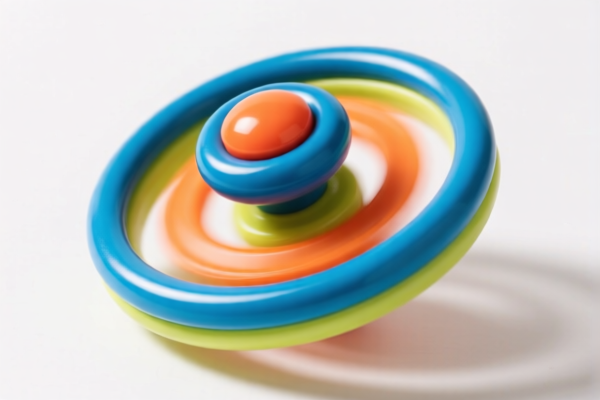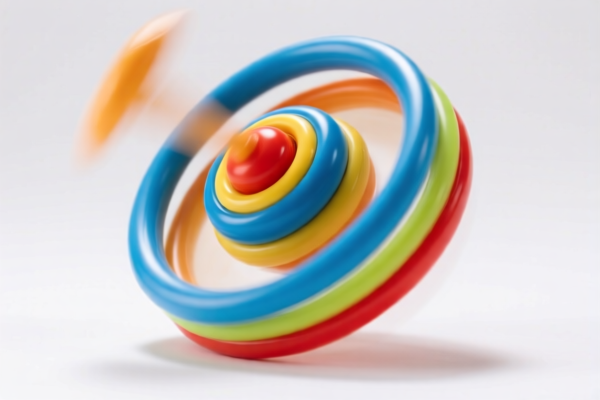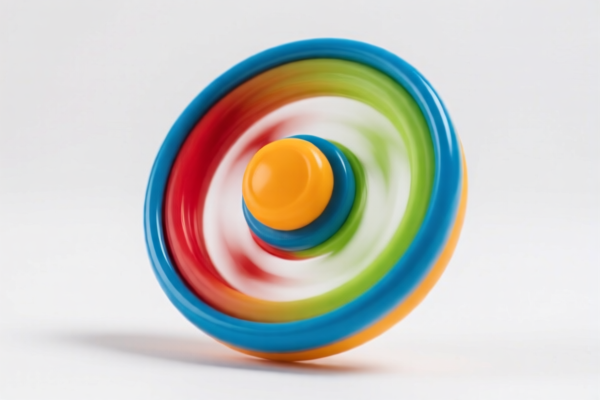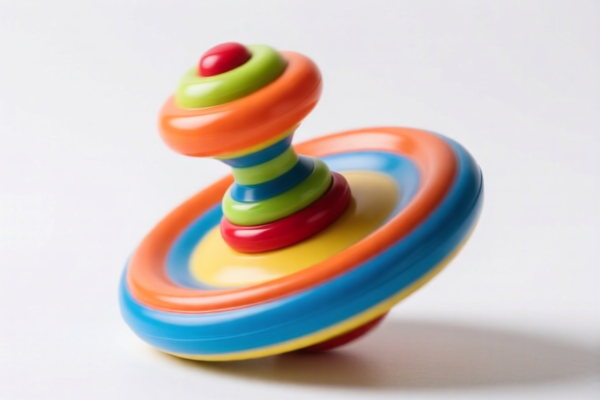| HS Code | Official Doc | Tariff Rate | Origin | Destination | Effective Date |
|---|---|---|---|---|---|
| 9503000071 | Doc | 30.0% | CN | US | 2025-05-12 |
| 9503000073 | Doc | 30.0% | CN | US | 2025-05-12 |
| 9505902000 | Doc | 30.0% | CN | US | 2025-05-12 |
| 9505906000 | Doc | 30.0% | CN | US | 2025-05-12 |
| 8206000000 | Doc | The rate of duty applicable to that article in the set subject t+30.0% | CN | US | 2025-05-12 |
| 8306100000 | Doc | 35.8% | CN | US | 2025-05-12 |
| 8306290000 | Doc | 30.0% | CN | US | 2025-05-12 |
| 6815994170 | Doc | 55.0% | CN | US | 2025-05-12 |
| 6815992000 | Doc | 55.0% | CN | US | 2025-05-12 |
| 6801000000 | Doc | 57.8% | CN | US | 2025-05-12 |
| 3924104000 | Doc | 33.4% | CN | US | 2025-05-12 |
| 3924905650 | Doc | 40.9% | CN | US | 2025-05-12 |




Spinning Toy
A spinning toy is a plaything designed to rotate or spin on its axis, typically utilizing momentum to maintain movement. These toys have a long history across various cultures and come in numerous forms, serving purposes ranging from simple amusement to skill-building and even meditative practices.
Materials
The materials used in spinning toys are diverse, dependent on the toy's complexity, intended use, and cost. Common materials include:
- Wood: Historically prevalent, used for tops, dreidels, and more complex constructions.
- Plastic: A widely used, affordable option for mass-produced toys like spinning tops, gyroscopes, and fidget spinners.
- Metal: Used for heavier, more durable tops, gyroscopes, and certain skill toys. Brass, steel, and aluminum are common choices.
- Cardboard: Often used in DIY or simpler constructions, particularly for buzzers or whirligigs.
- Glass: Historically used for certain tops, offering visual appeal but requiring careful handling.
- Modern Composites: Materials like carbon fiber and specialized polymers are used in high-performance skill toys.
Purpose & Function
The core function of a spinning toy is rotational movement. This is achieved through various means:
- Hand-Spinning: The most basic method, involving manually imparting rotational force.
- Pull-String Mechanism: Utilized in tops and buzzers, where a cord is repeatedly pulled to sustain spinning.
- Motorized: Electric motors can power the rotation, often seen in more complex toys or displays.
- Gyroscopic Effect: Some toys, like gyroscopes, rely on the principle of angular momentum to maintain stability and resist external forces.
- Airflow: Whirligigs and pinwheels utilize wind power to initiate and maintain rotation.
The purpose of these toys varies:
- Entertainment: Simple amusement and play.
- Skill Development: Toys like diabolo, kendama, and spinning tops require dexterity, coordination, and practice.
- Demonstration of Physics: Gyroscopes and tops illustrate principles of angular momentum, inertia, and friction.
- Meditation/Focus: Some spinning toys, particularly those requiring concentration to maintain spin, can be used for mindfulness practices.
Usage Scenarios
- Indoor Play: Tops, dreidels, and fidget spinners are commonly used indoors on flat surfaces.
- Outdoor Play: Buzzers, whirligigs, and larger tops are often used outdoors.
- Skill Toy Competitions: Diabolo, kendama, and certain spinning top styles have dedicated competitive scenes.
- Educational Demonstrations: Gyroscopes are used in physics classrooms and science museums.
- Collectibles: Certain vintage or specialized spinning toys are sought after by collectors.
Common Types
- Top: A classic toy consisting of a conical or cylindrical body designed to spin on a point. Variations include traditional wooden tops, metal racing tops, and battery-operated spinning tops.
- Dreidel: A four-sided spinning top used in the Jewish holiday of Hanukkah. Each side is marked with a Hebrew letter, and the game involves spinning and following specific rules.
- Buzzer: A toy that creates a buzzing sound when spun by rapidly pulling a string.
- Diabolo: A skill toy consisting of two cups connected by an axle, with a spool spun between them. Requires coordination and dexterity.
- Kendama: A Japanese skill toy consisting of a handle (ken) and a ball (tama) connected by a cord. Involves catching the ball in various ways.
- Fidget Spinner: A small, handheld device with rotating blades, designed to relieve stress and anxiety.
- Gyroscope: A device that utilizes a spinning wheel to maintain orientation. Can be used as a toy to demonstrate physics principles or as a stabilizing device.
- Whirligig: A rotating garden ornament powered by wind.
- Pinwheel: A rotating toy with blades that spin in the wind.
- Peg Top: A top that spins when tapped on a surface.
Based on the provided information, classifying “spinning toy” requires careful consideration of its material, function, and intended age group. Here’s a breakdown of potentially relevant HS codes:
- 9503000071: This code covers Tricycles, scooters, pedal cars and similar wheeled toys; dollsʼ carriages; dolls, other toys; reduced-scale (“scaleˮ) models and similar recreational models, working or not; puzzles of all kinds; parts and accessories thereof. Specifically, it applies to “Childrenʼs productsˮ as defined in 15 U.S.C. § 2052, labeled or determined by the importer as intended for use by persons under 3 years of age. If the spinning toy is designed for this age group, this HS code is applicable. The total tax rate is 30.0%.
- 9503000073: This code also covers Tricycles, scooters, pedal cars and similar wheeled toys; dollsʼ carriages; dolls, other toys; reduced-scale (“scaleˮ) models and similar recreational models, working or not; puzzles of all kinds; parts and accessories thereof. However, it is for “Childrenʼs productsˮ as defined in 15 U.S.C. § 2052, labeled or determined by the importer as intended for use by persons from 3 to 12 years of age. If the spinning toy is designed for this age group, this HS code is applicable. The total tax rate is 30.0%.
- 9505902000: This code covers Festive, carnival or other entertainment articles, including magic tricks and practical joke articles; parts and accessories thereof, specifically for Magic tricks and practical joke articles; parts and accessories thereof. If the spinning toy functions as a magic trick or practical joke item, this HS code may be relevant. The total tax rate is 30.0%.
- 9505906000: This code covers Festive, carnival or other entertainment articles, including magic tricks and practical joke articles; parts and accessories thereof, categorized as “Other”. If the spinning toy falls under festive or carnival articles but isn't specifically a magic trick or joke item, this HS code could apply. The total tax rate is 30.0%.
Important Considerations:
Regarding HS codes 9503000071 and 9503000073, it is crucial to accurately determine the intended age group of the spinning toy, as this directly impacts the correct HS code selection. The definition of “Children’s products” as per 15 U.S.C. § 2052 should be consulted for clarification.
Customer Reviews
No reviews yet.